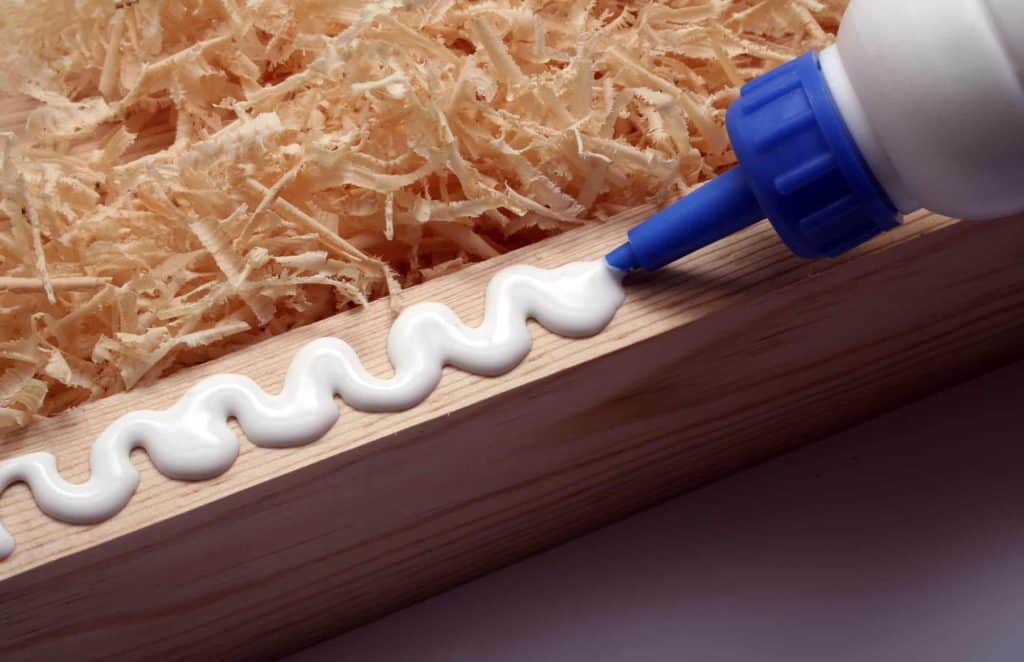Picture this: you’re in the middle of a woodworking project, and you reach for your trusty PVA wood glue, only to find that it’s been sitting on your shelf for months. Are you wondering, “Does PVA wood glue go off?” Well, my young DIY enthusiasts, you’ve come to the right place. Let’s dive into this adhesive adventure and find out if your glue is still good to go!
So, what’s the deal with PVA wood glue? Can it lose its magical bonding power over time? Don’t fret, my curious craftsmen and craftswomen. We’re here to unravel the mystery. Whether you’re a seasoned woodworker or just starting to explore the world of DIY, understanding how long your PVA wood glue lasts is essential.
Now, let’s put on our detective hats and embark on a glue-filled journey to discover the answer to the question, “Does PVA wood glue go off?” Get ready to uncover the truth about this versatile adhesive and save yourself from glue-related mishaps! Let’s glue it up and get started!
Wondering if PVA wood glue goes off? PVA wood glue has a shelf life, typically around one to two years. Over time, the glue may become less effective, losing its bonding strength. To ensure the best results, it’s recommended to check the expiration date on the bottle and use within the specified timeframe. Proper storage in a cool, dry place can help extend the shelf life of the glue. So, be sure to check those dates before starting your woodworking projects!

Does PVA Wood Glue Go Off? Understanding the Shelf Life of PVA Wood Glue
Woodworking projects often require the use of wood glue to ensure a strong and durable bond between pieces. One common type of wood glue is PVA (Polyvinyl Acetate) glue. If you’ve ever wondered whether PVA wood glue can go off or expire, this article is for you. In this comprehensive guide, we will explore the shelf life of PVA wood glue, factors that can affect its lifespan, signs of deterioration, and tips to maximize its longevity. Let’s dive in!
The Shelf Life of PVA Wood Glue: What You Need to Know
PVA wood glue, when stored properly, typically has a shelf life of one to two years. However, it’s essential to note that the shelf life can vary depending on factors such as brand, formulation, and storage conditions. PVA wood glue is a water-based adhesive, and over time, it can degrade due to exposure to air, temperature fluctuations, and contaminants.
Factors Affecting the Shelf Life of PVA Wood Glue
Several factors can impact the shelf life of PVA wood glue:
- Storage Conditions: PVA wood glue should be stored in a cool, dry place away from direct sunlight and extreme temperatures. High temperature and humidity can accelerate the degradation process, reducing the glue’s effectiveness.
- Exposure to Air: PVA wood glue is sensitive to air exposure. When the container is opened frequently or left uncapped, the glue can dry out more quickly, shortening its shelf life.
- Contamination: Keeping the glue container clean and free from debris or other substances is crucial. Contaminants in the glue can compromise its performance and lead to a shorter shelf life.
To ensure the longevity of your PVA wood glue, it’s essential to take precautions in storage and usage. Now, let’s explore some signs that indicate your PVA wood glue may have gone off.
Signs of Deterioration in PVA Wood Glue
Even if you store your PVA wood glue properly, it may still degrade over time. Here are some signs that indicate your glue may have gone off:
- Thickening: PVA wood glue that has thickened beyond its original consistency may no longer be effective. It should have a smooth, liquid consistency for optimal bonding.
- Sour or Vinegary Smell: If your glue emits a sour or vinegary odor, it may indicate bacterial growth or decomposition, rendering the glue unreliable for use.
- Clumping or Separation: When PVA wood glue starts to clump or separate into layers, it signifies degradation. The components may no longer mix correctly, affecting the glue’s bonding strength.
Now that you understand the factors that can affect the shelf life of PVA wood glue and the signs of deterioration, let’s explore some tips to maximize the longevity of your glue.
Tips to Maximize the Longevity of PVA Wood Glue
By following these tips, you can ensure that your PVA wood glue stays in excellent condition for as long as possible:
- Proper Storage: Store your PVA wood glue in a cool, dry place, and tightly seal the container after each use to minimize air exposure.
- Keep Container Clean: Wipe off any excess glue from the container’s rim and cap before sealing it. This helps prevent contamination and promotes a tight seal.
- Use the Right Amount: Avoid using excessive amounts of glue during application. Using the recommended amount ensures a proper bond and minimizes waste.
- Inspect before Application: Before using the glue, check its consistency, smell, and appearance for any signs of deterioration. If it appears off, it’s best to discard and get a fresh bottle.
In conclusion, PVA wood glue does have a shelf life, ranging from one to two years if stored properly. Factors such as storage conditions, air exposure, and contamination can affect its lifespan. Signs of deterioration include thickening, a sour odor, and clumping. By following the tips mentioned above, you can maximize the longevity of your PVA wood glue and ensure strong, reliable bonds in your woodworking projects. Happy gluing!
Key Takeaways: Does PVA Wood Glue Go Off?
- PVA wood glue can go off over time if it is not stored properly.
- Exposure to air and moisture can cause PVA wood glue to deteriorate.
- It is important to check the expiration date on the bottle of PVA wood glue before using it.
- If the PVA wood glue has a strange smell or changes in color or consistency, it may have gone off.
- To extend the shelf life of PVA wood glue, store it in a cool, dry place and tightly seal the container after use.
Frequently Asked Questions
Welcome to our FAQ section where we’ll answer some common questions about PVA wood glue and its shelf life. If you’re wondering about the longevity of PVA wood glue, you’ve come to the right place!
1. How long does PVA wood glue last?
PVA wood glue typically has a shelf life of about one to two years, depending on the brand and storage conditions. It’s always best to check the expiration date printed on the glue bottle to be sure. Proper storage can help extend its lifespan.
Store your PVA wood glue in a cool, dry place away from direct sunlight and extreme temperatures. Keep the lid tightly closed when not in use to prevent air from getting inside the bottle, which can cause the glue to deteriorate.
2. What are the signs that PVA wood glue has gone bad?
When PVA wood glue goes bad, you may notice changes in its texture, color, or smell. The glue may become thicker, lumpy, or have a yellowish hue. It may also develop a sour or rancid odor. These are indications that the glue has deteriorated and may no longer be effective.
If you’re unsure about the condition of your PVA wood glue, it’s best to perform a test by applying a small amount to scrap wood. If the glue doesn’t bond properly or shows signs of failure, it’s time to replace it with a fresh bottle.
3. Can expired PVA wood glue still be used for non-structural projects?
Expired PVA wood glue is not recommended for any project, even non-structural ones. While it may still appear to be usable, the integrity and adhesive properties of the glue may have significantly diminished. Using expired glue can result in weaker bonds, which can lead to project failure or the need for repairs in the future.
To ensure the best results and the strongest bonds, it’s always advisable to use fresh PVA wood glue within its recommended shelf life. This way, you can have confidence in the reliability and durability of your projects.
4. Can PVA wood glue be restored if it has thickened over time?
If your PVA wood glue has thickened over time, there are a few steps you can take to try and restore it. Start by adding a small amount of warm water to the glue bottle and stirring gently. Keep adding water slowly until you achieve the desired consistency.
It’s essential to keep in mind that this method may not always work, especially if the glue has gone bad or has been expired for an extended period. If the glue remains thick and doesn’t regain its original consistency, it’s best to replace it with a fresh bottle.
5. Can freezing temperatures affect the performance of PVA wood glue?
Yes, freezing temperatures can negatively impact the performance of PVA wood glue. The freezing and thawing process can cause the glue to separate and break down, affecting its adhesive properties. It can also lead to changes in texture and consistency, rendering the glue less effective.
To avoid potential issues, make sure to store your PVA wood glue in a place where it won’t freeze, such as in a heated workshop or indoors. If you suspect that your glue has been exposed to freezing temperatures, it’s best to perform a test before using it for any project to ensure its effectiveness.

Summary
So, to sum it up, PVA wood glue does go off eventually, but it depends on certain factors. Exposure to heat, oxygen, and moisture can cause the glue to deteriorate over time. It’s important to store it properly and check for any changes in consistency or odor before using it on your woodworking projects.
In conclusion, make sure to keep your PVA wood glue in a cool and dry place, tightly sealed. If it looks or smells different, it’s better to get a fresh bottle to ensure strong and lasting bonds for your woodworking endeavors. Happy gluing!
